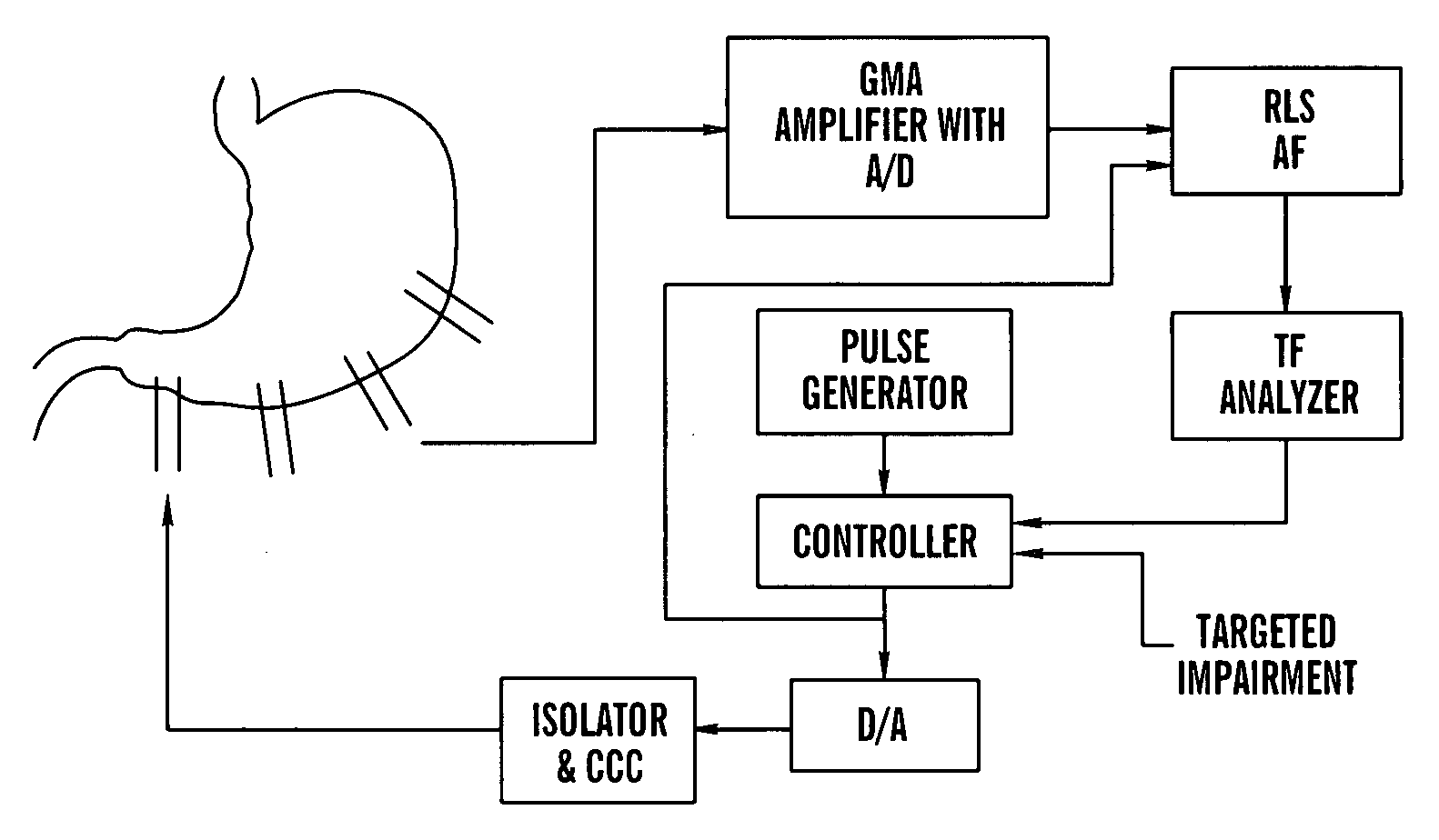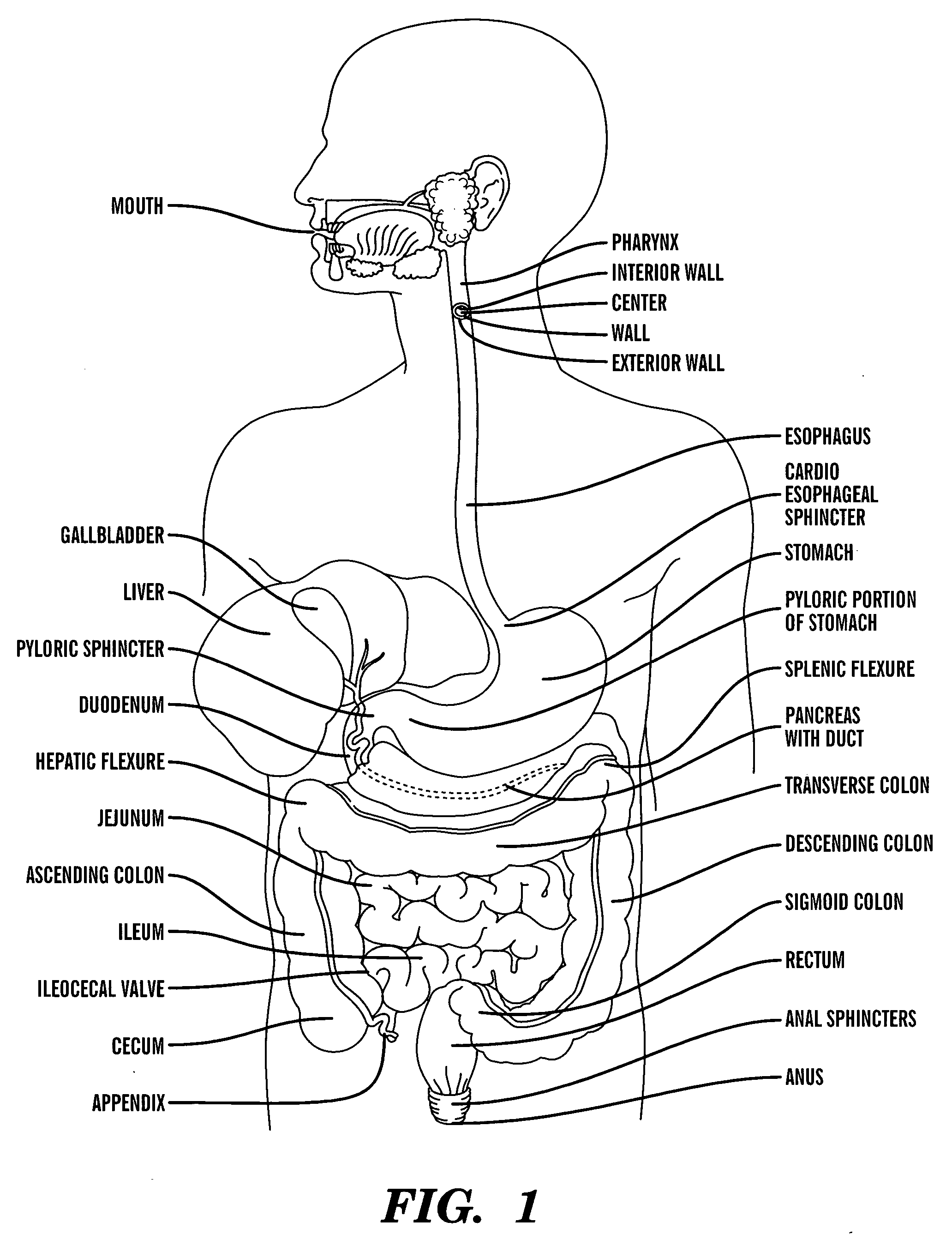Gastrointestinal electrical stimulation
a technology of electrical stimulation and gastrointestinal tract, applied in the field of gastrointestinal electrical stimulation, can solve the problems of increased socioeconomic hardship, abnormal rate of solid gastric emptying in obese subjects, and significant impairment in gastric emptying, so as to reduce the weight of the subject and reduce the weigh
- Summary
- Abstract
- Description
- Claims
- Application Information
AI Technical Summary
Benefits of technology
Problems solved by technology
Method used
Image
Examples
example i
Antegrade Electrical Stimulation
Extensive experiments on antegrade gastric and intestinal electrical stimulation have been performed in both animals and humans. Unlike the retrograde stimulation proposed in this application, these studies were designed to normalize impaired gastrointestinal motility. The most important points learned from these experiments are: 1) electrical stimulation is able to entrain slow waves; 2) antegrade stimulation accelerates gastric emptying; and 3) no adverse effects have been noted in these previous studies, demonstrating safety of electrical stimulation.
Antegrade electrical stimulation entrains slow waves. A number of recent systematic studies have been performed and indicated that a complete entrainment of gastric slow waves is feasible in both humans and dogs (Lin et al. 1998; Lin et al. 2000a; McCallum et al. 1998; Qian et al. 1999; Abo et al. 2000; Lin et al. 2000b). The pulse width used for the entrainment of gastric slow waves in patients wi...
example ii
Retrograde Electrical Stimulation (RGES) for Treatment of Obesity and Other Gastrointestinal Tract Disorders
This example places an artificial ectopic pacemaker in the distal antrum to partially or completely override regular gastric slow waves with a feedback control mechanism. Two pairs of bipolar electrodes are placed on the serosa along the greater curvature laparoscopically. The distal pair is about 2 cm above the pylorus and is used for electrical stimulation (serving as an artificial pacemaker), whereas the proximal pair is about 10 cm above the pylorus and is used for the measurement of gastric slow waves. The regularity of gastric slow waves is calculated from the proximal pair and the strength of electrical stimulation applied on the distal pair is determined based on the regularity of gastric slow waves measured from the proximal pair. The targeting regularity is set up in the initial trial period such that the intake of food is reduced but the subject is free of any sy...
example iii
Portable stimulators for gastric electrical stimulation are feasible and effective. A portable electrical stimulator was previously developed (Chen et al. 1995b) and used in more than 20 patients (see FIG. 9). The stimulator uses fixed parameters and delivers stimulation pulses with a frequency of 3 cpm, pulse width of 300 ms and pulse amplitude of 4 mA (constant current mode). The constant current is guaranteed with a load in the range of 300-1000 W. The stimulator is operated by a 9-volt battery with an easy access for replacement. A female pin is available to connect the stimulator with the stimulation electrode wire. There is a manual switch for turning on or off the stimulator. This stimulator has been used in a clinical research study (McCallum et al. 1998) with no malfunction or adverse events reported.
PUM
 Login to View More
Login to View More Abstract
Description
Claims
Application Information
 Login to View More
Login to View More - R&D
- Intellectual Property
- Life Sciences
- Materials
- Tech Scout
- Unparalleled Data Quality
- Higher Quality Content
- 60% Fewer Hallucinations
Browse by: Latest US Patents, China's latest patents, Technical Efficacy Thesaurus, Application Domain, Technology Topic, Popular Technical Reports.
© 2025 PatSnap. All rights reserved.Legal|Privacy policy|Modern Slavery Act Transparency Statement|Sitemap|About US| Contact US: help@patsnap.com



